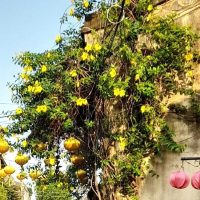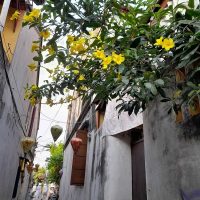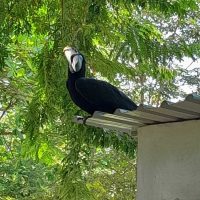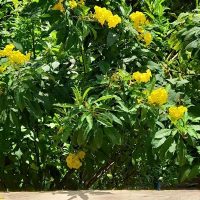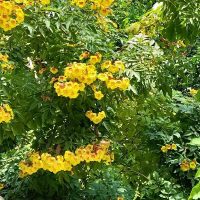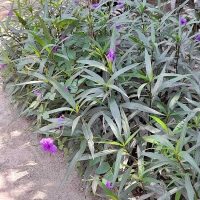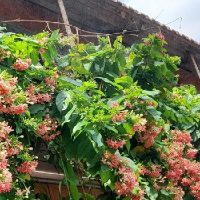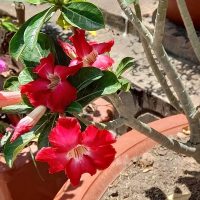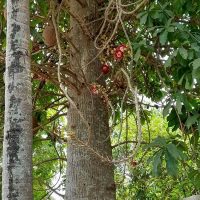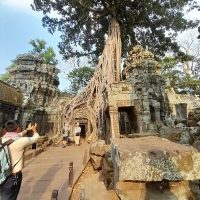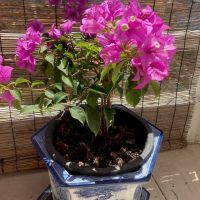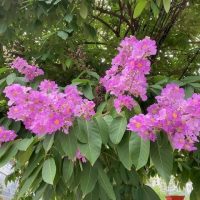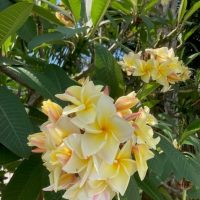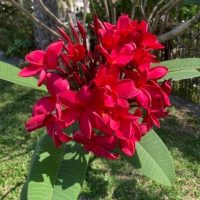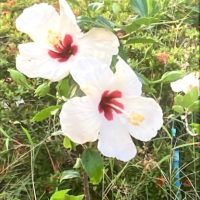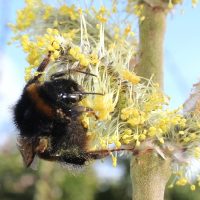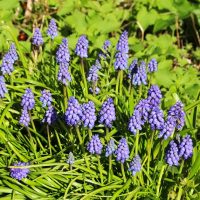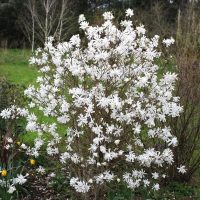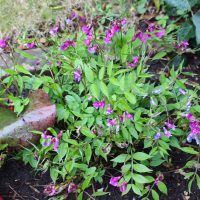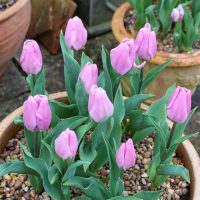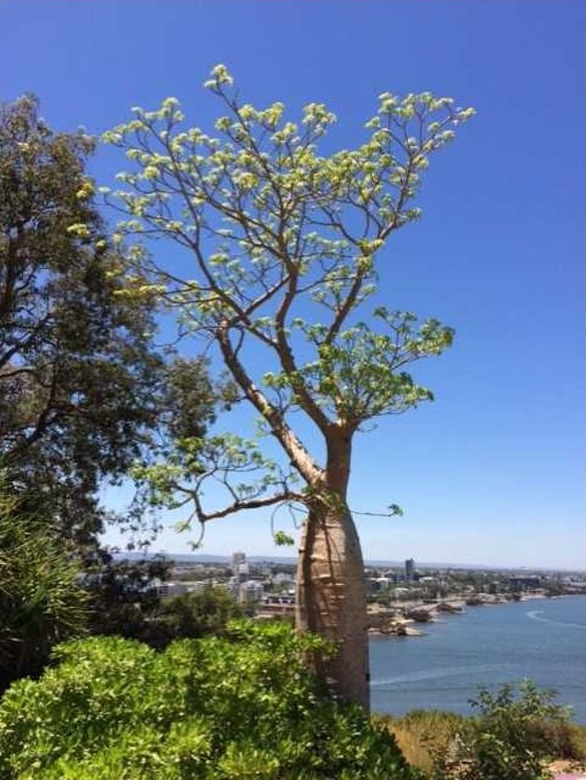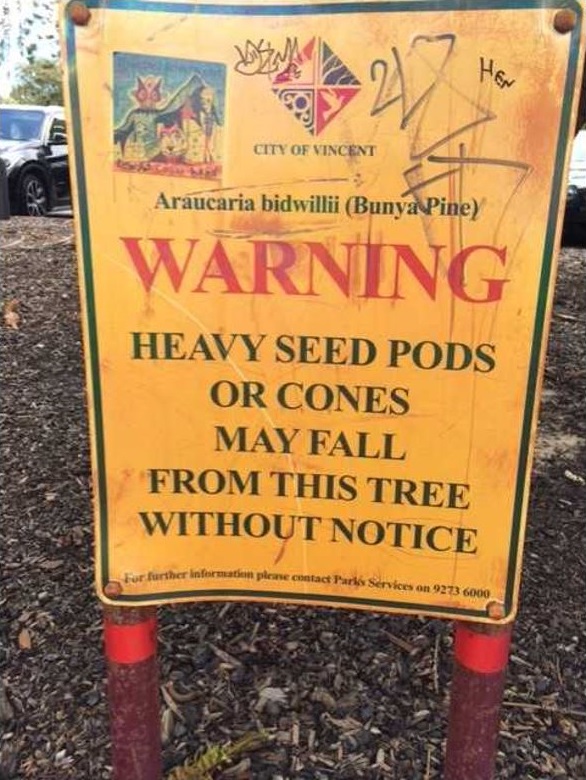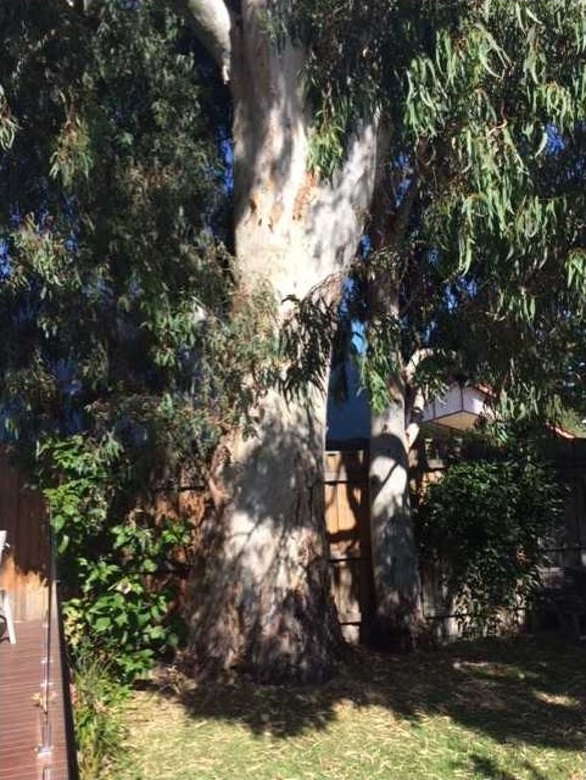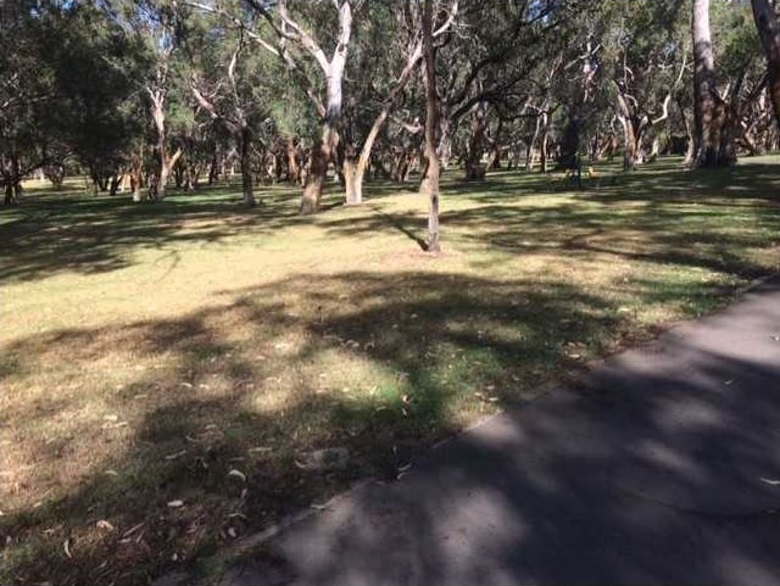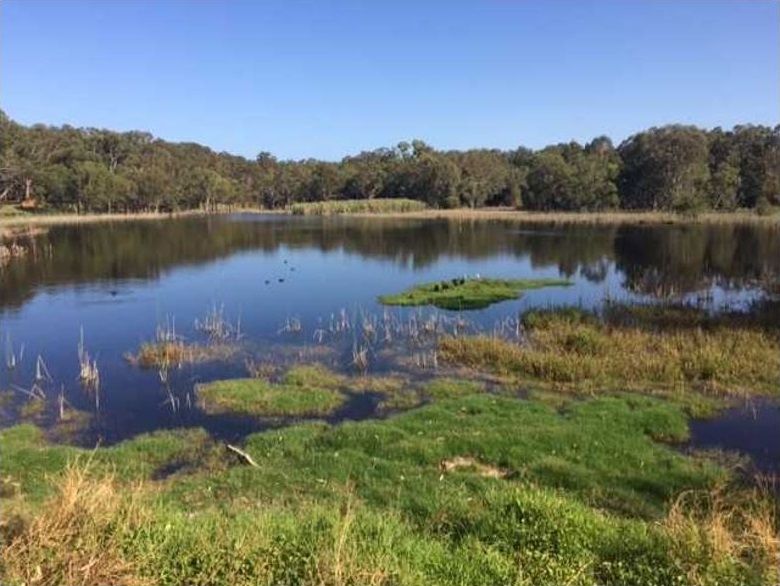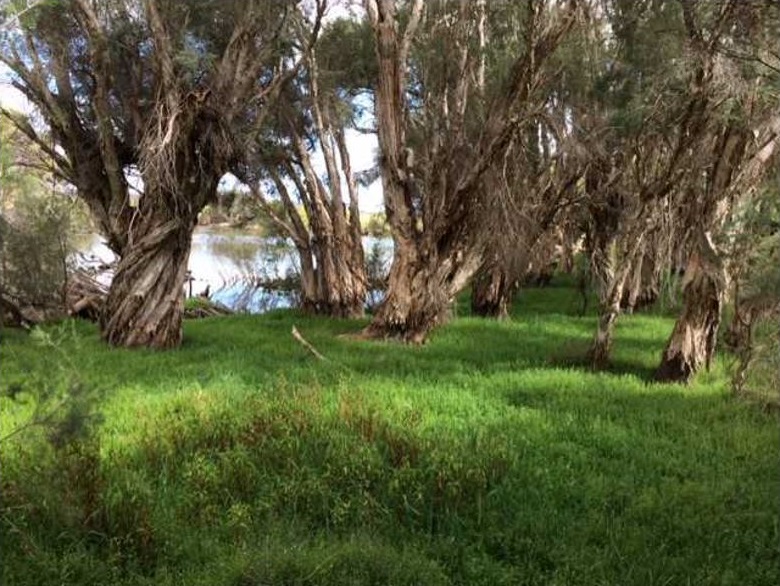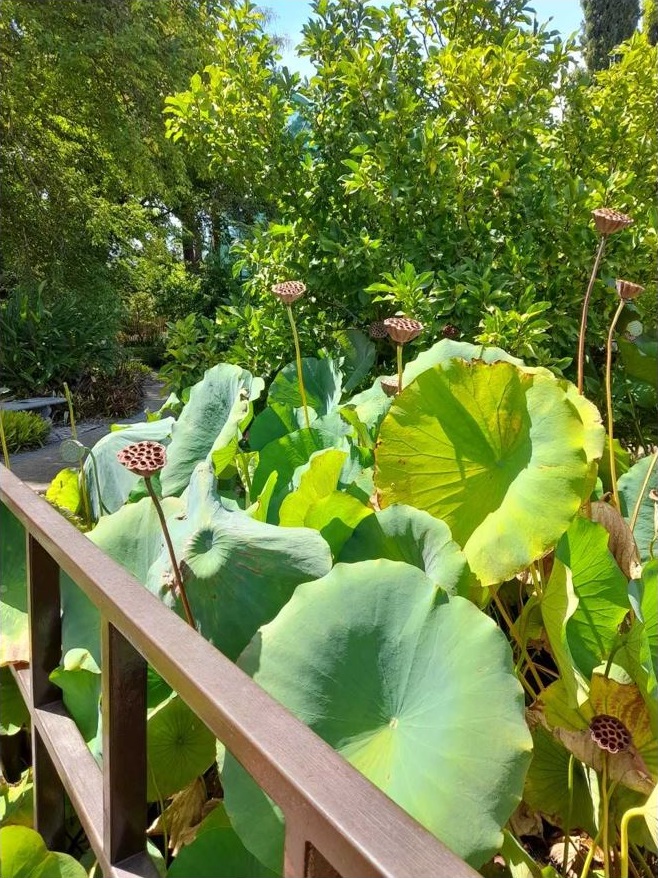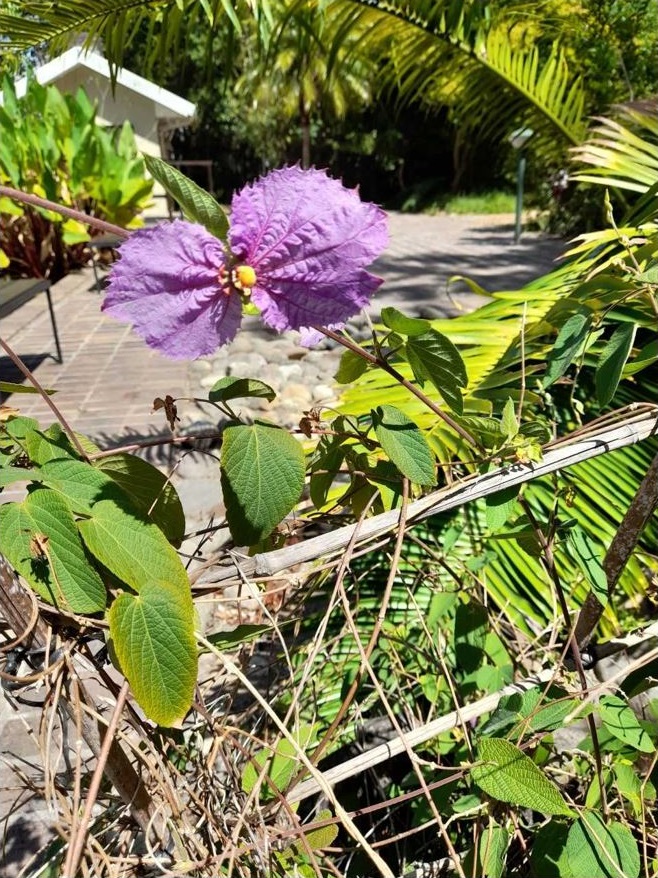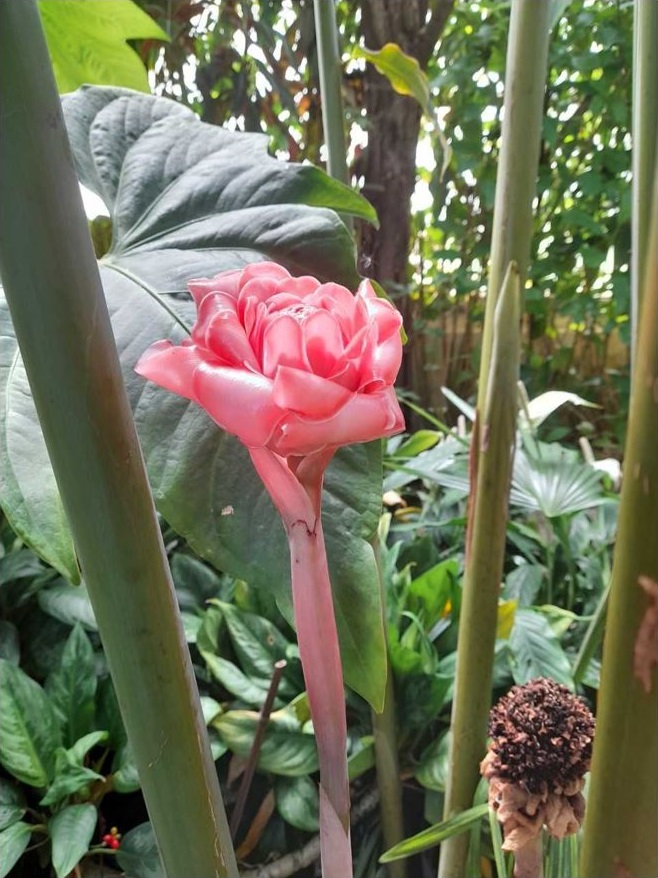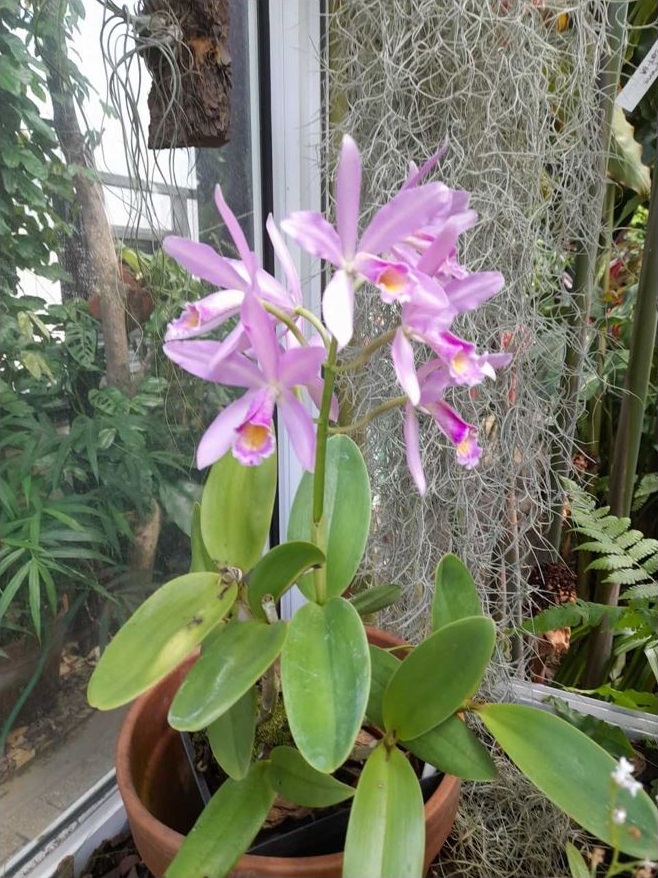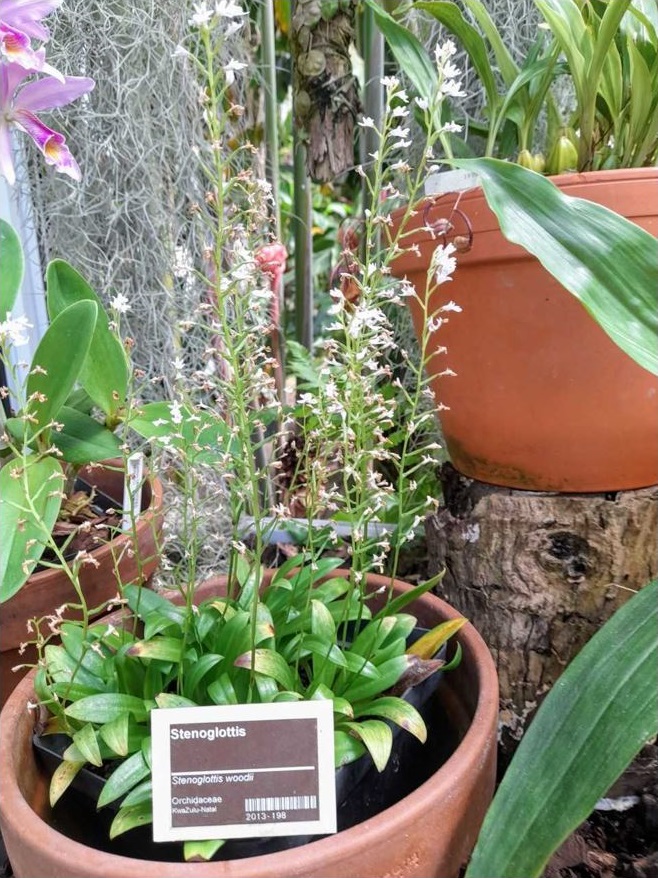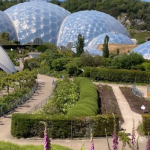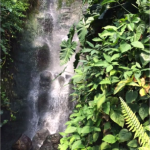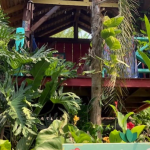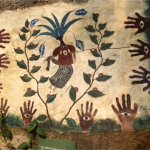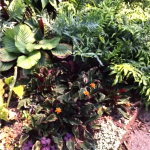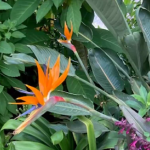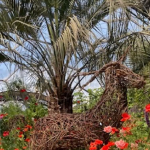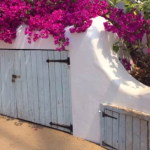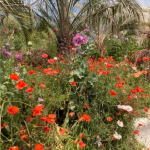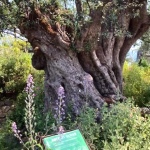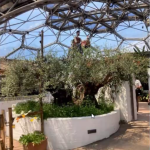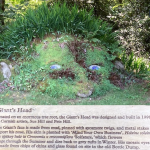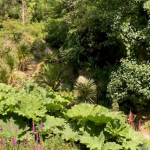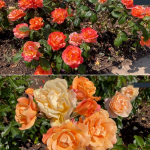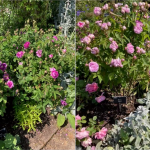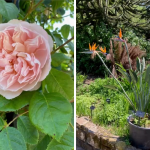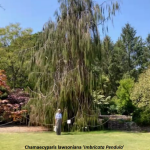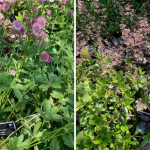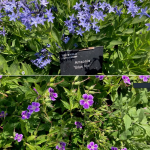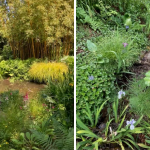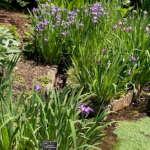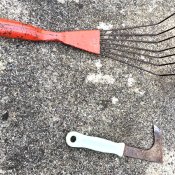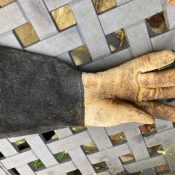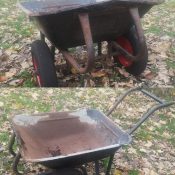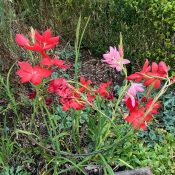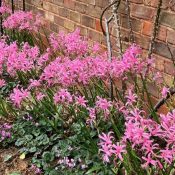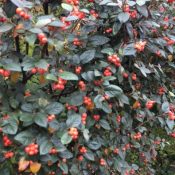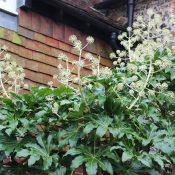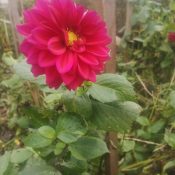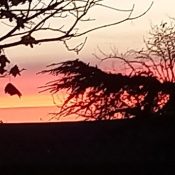Hortitalk
Wednesday 27th March
This was our last of our informal Zoom session for members to discuss anything about plants and gardens, before Hortitalk takes a summer break.
Members’ photos on the theme ‘An Explosion of Colour’ came from Lavant and from further afield, from South East Asia. It was the latter that really exploded in colour.
Vietnam
The photos were taken by Suzy, who fresh from her return from South Africa, was currently on a visit to Vietnam.
| 1 & 2. | The Golden Trumpet vine Allomanda cathartica. |
| 3 – 5. | Yellow Trumpet tree Tecoma stans . |
| 6. | Brugmansia. |
| 7. | Ruellia simplex used as a border plant. |
| 8. | Rangoon creeper Combretum indicum, a prolific climber. |
| 9&10. | Summer impala lily Adenium swazicum. |
| 11. | Known locally as the Salal tree. Fairly rare in Vietnam, as only allowed in the gardens of Bhuddist temples. Also commonly known as the Canonball tree because of its large round fruits. |
| 12&13. | Trees at Angkor Wat and Ta Prohm, Cambodia |
Lavant
Back home, with some plants we are more accustomed to.
| 1. | Exochorda macrantha ‘The Bride’ just coming into flower, with white Spirea behind. |
| 2. | Bumble bee foraging on willow catkin. |
| 3. | Grape hyacinth Muscari – seems to be doing particularly well this year. |
| 4. | Magnolia stellata |
| 5. | Tulip ‘Barcelona’. |
Hortitalk
Wednesday 28th February
The main feature of this Hortitalk was “Southern Hemisphere Delights”, a presentation of photos taken by Sue Jackson and Suzy Clements on their recent stays in Western Australia and South Africa respectively. The sun and warmth portrayed in these photos was a welcome respite from the rain, wind and frosts we have been experiencing here
Western Australia
The photos were taken in the environs of Perth, where Sue was staying with her daughter. The weather was very hot, 35-40oC, with no rain at all. In spite of the ubiquitous Eucalyptus gum trees and resilient conifers, such as the Norfolk Island pine, still create a green landscape.
- A boab tree, with the city of Perth and the Swan River in the background.
- From same point, but looking inland.
- no comment needed.
- Gum tree, about 60ft tall, in Sue’s daughter’s garden.
- Shadows of the eucalyptus.
- Water in spite of the drought.
- Eucaluptus shedding their bark.
South Africa
All of the photos were taken in the Stellenbosch Botanic Gardens, part of Stellenbosch University.
- Lotus flower seed pods and leaves.
- Cyphostemma juttae Wild grape.
A succulent from Namibia. Sought after as a container plant. Grows up to two metres. - Bow tie vine: Dalechampia aristolochiifolia.
Also called the Costa Rican butterfly vine. Origin South America. Silk like petals. - Etlingera elatior: Torch Ginger. 3 stages of flower development: initial bud.
- Half open flower.
- Fully open flower head. 4ft tall.
- Cattleya orchid.
- Stenoglottis woodii orchid with tiny flowers.
- Mystacidium venosum.
Miniature epiphytic orchid – stems 10 to 15mm long. Native of the Eastern Cape.
The last six photos also show some hanging Spanish moss Tillandsia usneoides.
Hortitalk
Wednesday 24th January
The main part of January’s Hortitalk was dedicated to:
“Some Cornish Delights”
A presentation by Margaret Rhodes of photos that she and Sue Jackson had taken of the Eden Project and the Lost Gardens of Heligan, as well as of RHS Rosemoor in Devon, when they took part in the visit organised by Hayling Island Horticultural Society.
The Eden Project
Rainforest Biome
This this houses plants from tropical islands to SE Asia, and West Africa to tropical South America. By strictly controlling the ambient conditions, particularly high humidity and temperature, the settings of the rainforest are replicated. Lush foliage dominates, with varying shapes, sizes and hues crowded together.
Mediterranean Biome
The meteorological conditions of the Mediterranean, South Africa, Western Australia and California.
Cooler and drier than the rainforest, with plants providing much more colour.
The Lost Gardens of Heligan
Like so many large gardens, work on these gardens stopped in 1914, when the workers went off to war. After the war, the gardens were left to become wild, overgrown and derelict. It was only in the 1990s that their restoration was undertaken. They were first open to the public at Easter 1992, although a lot of the restoration work continued after that.
The glasshouses along one side of the large walled garden were restored.
The ravine with its own micro-climate is the location of the only outside jungle in the country.
RHS Garden Rosemoor
Located in North Devon. Amongst many other delights, it alluded to its name with glorious displays of many varieties of roses, at their best at that time of year, June.
Click any image to enlarge and on location titles for website
Hortitalk
Wed 22th November 2023
Chairman, Mike Kingsford, showed photos that members had sent in on this month’s two themes:
‘Your tools of the trade‘.
Barbara couldn’t be without two very old tools: her mini rake and patio crack weeder.
Margaret’s leather gauntlets protect her against the toughest thorns, whilst remaining very supple.
Sue relies on some ancient tools, well made and still in good condition.
Ali had recently discovered the ‘Root Slayer’, a spade armed with two sharp saw-bladed edges to cut through roots, making it easier to dig up large plants.
Mike finds his unusual two-wheeled wheelbarrow particularly useful as it is much more stable than the traditional one-wheeled version. However, in confined spaces it can be more difficult to manoeuvre.
Click any image to enlarge
‘Any colour in your garden at the moment?‘
Barbara still has some splashes of colour in her garden, with the bright Kaffir Lilies (Hesperantha previously known as Schizostylis) and Nerines.
Amongst the plants now providing colour in Sue’s garden are the Cotoneaster with its red berries and the Mahonia.
Lesley’s Sasanqua Camellia is still in bloom, now joined by an early winter-flowering Rhododendron.
Roger’s Clematis ‘Vicki‘ claimed to be able to flower through to the beginning of autumn, but is still in flower now. Unfortunately, the mild weather has also benefitted the bugs that are nibbling the petals. The white ivy-like flowers of the Fatsia japonica make a bright contrast against the shiny dark green leaves, a late season treat for pollinators. Although the bulk of the Astrantia major Alba had bloomed as normal in summer, there were a few plants flowering right now.
As the first strong frosts are still to arrive, Dahlias are still providing a lot of colour – Mike showed us one in his garden. Unfortunately, the flower on his Hedychium ginger had just past its best. His two Medlar trees were as ever loaded with fruit, which he is again offering to members – they make lovely jelly when they have bletted.
Colour arrived in Ali’s garden with the setting sun.
Mike finished by reminding members of the LHS stall at the Lavant Christmas Fayre.

